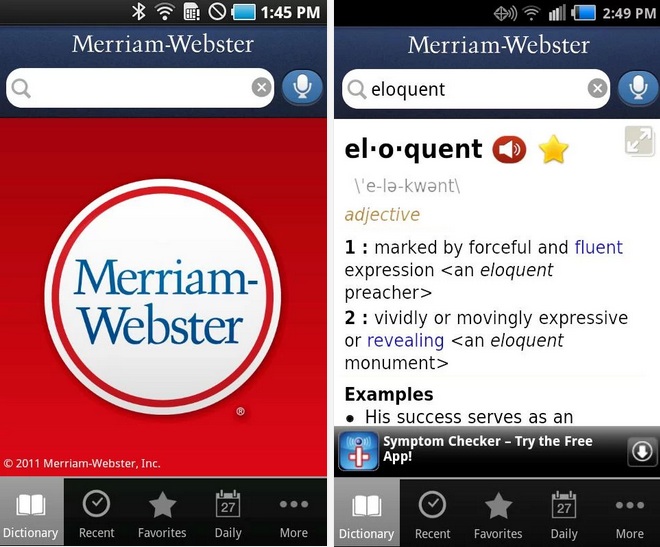Random House Unabridged Dictionary
Random House Webster's Unabridged Dictionary is a large American, first published in 1966 as The Random House Dictionary of the English Language: The Unabridged Edition. Edited by Jess Stein, it contained 315,000 entries in 2256 pages, as well as 2400 illustrations.
Random House Webster's Unabridged Dictionary App
The version in 1994 also included 120,000 spoken pronunciations.The publishing company entered the market after World War II. They acquired rights to the and the, both out of print. Their first dictionary was 's, published in 1947, and based primarily on The New Century Dictionary, an abridgement of the Century.In the late 1950s, it was decided to publish an expansion of the, which had been modestly updated with each reprinting since its publication. Under editors Jess Stein and, they augmented the American College Dictionary with large numbers of entries in all fields, primarily proper names, and published it in 1966 as The Random House Dictionary of the English Language: The Unabridged Edition.

It was the first dictionary to use computers in its compilation and.In his preface to the 1966 edition, Stein argued (p. Vi) that the Random House Dictionary steers 'a linguistically sound middle course' between the 'lexicographer's: should the dictionary be an authoritarian guide to 'correct' English or should it be so antiseptically free of comment that it may defeat the user by providing him with no guidance at all?' In 1982 Random House published The Random House ProofReader, a computer based on its dictionary. An expanded second edition of the printed dictionary, edited by, appeared in 1987, revised in 1993. This edition adopted the Merriam-Webster Collegiate innovation of adding dates for the entry of words into the language. Unlike the Collegiate, which cited the date of the first known citation, Random House indicated a range of dates.
For example, where the Collegiate gave 1676, Random House might offer 1670-80.Random House incorporated the name Webster's into the dictionary's title after an injunction won by preventing its use on Random House's college edition was overturned on appeal. The name Random House Webster's is now used on many Random House publications.Versions of the dictionary have been published under other names, including Webster's New Universal Dictionary (which was previously the name of an entirely different dictionary) and Webster's Encyclopedic Unabridged Dictionary.The online dictionary bases its proprietary content on the Random House unabridged. See also.References.
PC Magazine (Jan 25, 1994). P. 56. Barbara Ripp Safford and Margaret Irby Nichols, eds. Guide to reference materials for school library media centers (1998), p. 217., Welcome to the monkey house: a collection of short works (1998), pp. 118–23. Ronald A.
Wells (1973). Walter de Gruyter.
P. 113. Advertisement (November 1982). Retrieved 21 October 2013.
Edited by Jess Stein, it contained, entries in pages, as well as illustrations. They acquired rights to the Century Dictionary and the Dictionary of American English, both out of print. In the late s, it was decided to publish an expansion of the American College Dictionary, which had been modestly updated with each reprinting since its publication.

It was the first dictionary to use computers in its compilation and typesetting. In his preface to the edition, Stein argued p.The primary use of a dictionary is to give definitions, spelling, and pronunciation of words. Some dictionaries include charts, tables and illustrations embedded in the entries. A thesaurus lists synonyms for words and is a useful tool for writers. Many desk, or collegiate, dictionaries have electronic equivalents with an added thesaurus.
By the way, remember that your word processing program includes a thesaurus. When evaluating both dictionaries and thesauri, look at what the entries include and examine the arrangement of information in each. Is it laid out in a manner that is easy to understand?